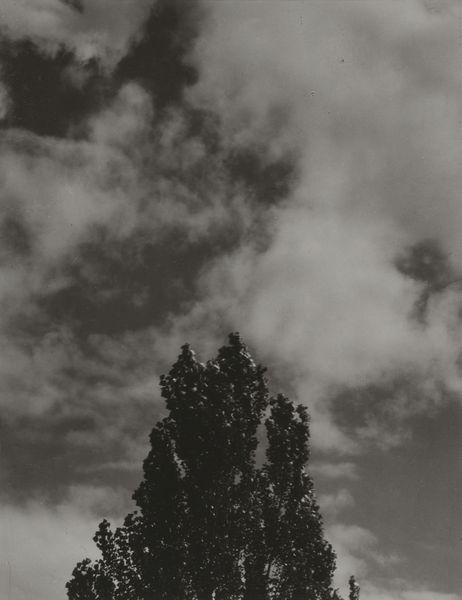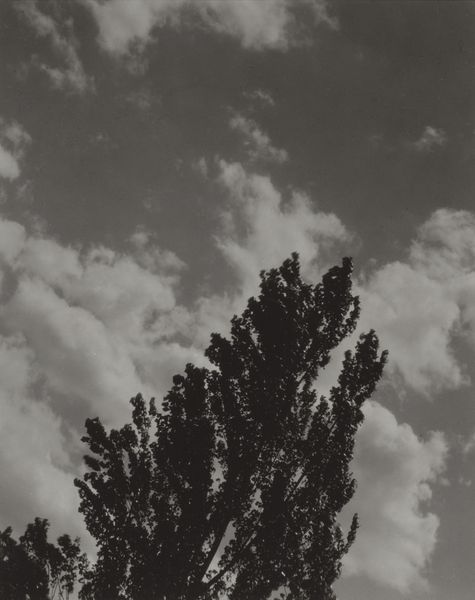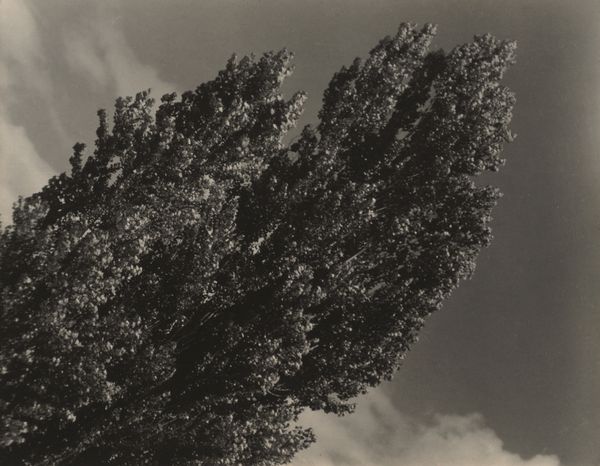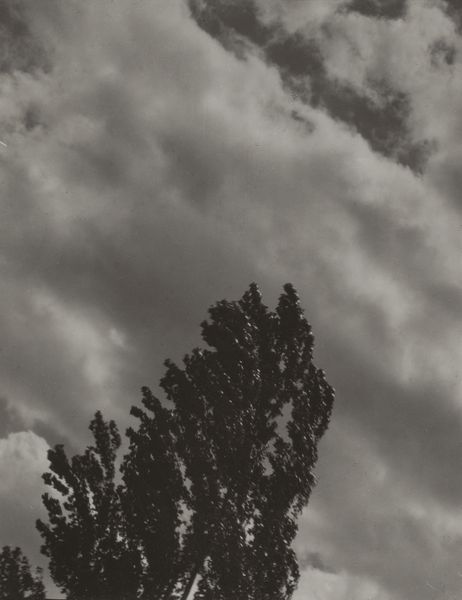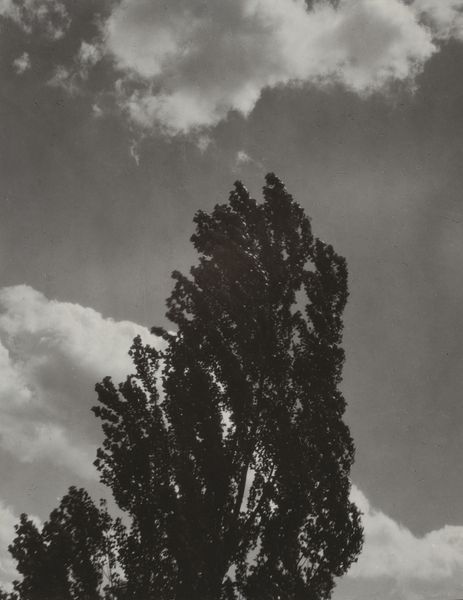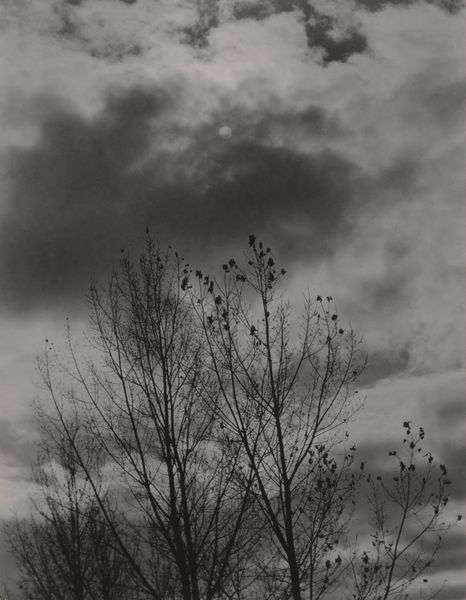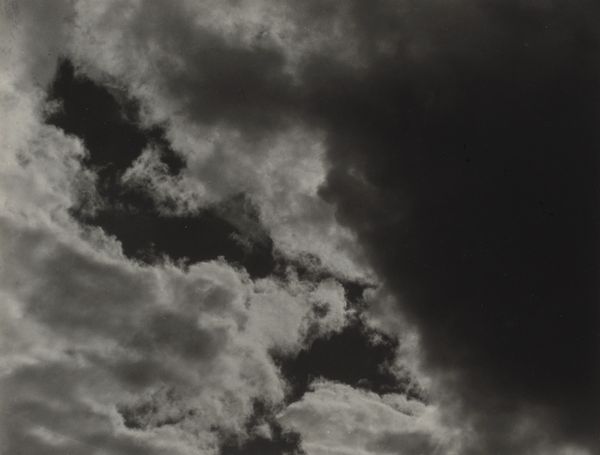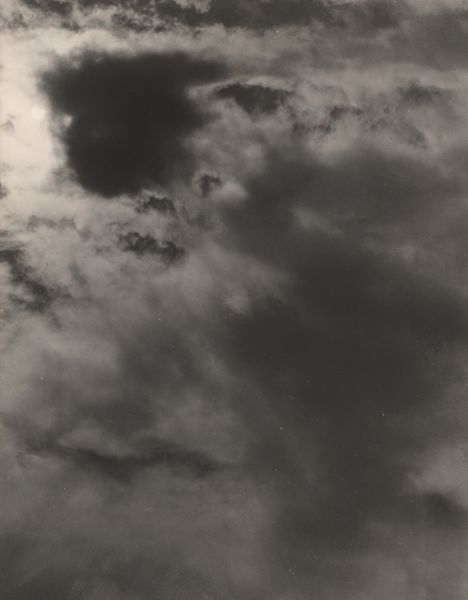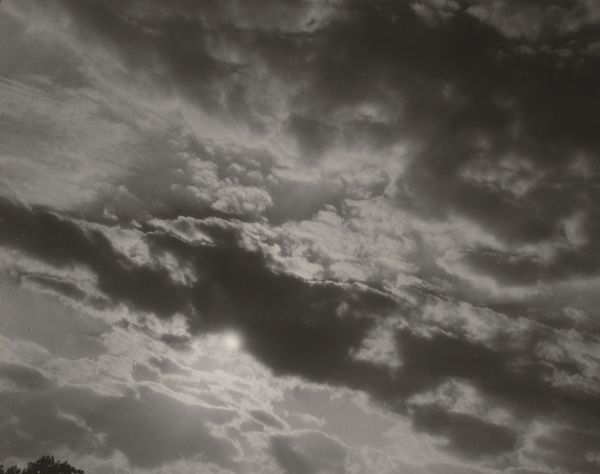
Dimensions: image: 11.7 x 8.7 cm (4 5/8 x 3 7/16 in.) sheet: 12.6 x 10.2 cm (4 15/16 x 4 in.) mount: 34.3 x 27.7 cm (13 1/2 x 10 7/8 in.)
Copyright: National Gallery of Art: CC0 1.0
Curator: Alfred Stieglitz's "Songs of the Sky and Trees," a gelatin-silver print from 1923. My first impression is that of upward movement; the branches reach for an evocative, almost churning sky. Editor: I’m struck by how immediate it feels, like a raw, unfiltered glimpse into a specific moment. Gelatin-silver prints were relatively common, of course, yet seeing it rendered with this medium elevates the photograph above mass reproduction; what can you tell us about its creation? Curator: Stieglitz was deeply invested in photography as a fine art. His use of gelatin silver, combined with his darkroom manipulation and keen sense of composition, elevates the photographic process. Think about the labor and skill involved; it's a far cry from casual snapshot photography. He intended the photograph itself as an object to be contemplated. Editor: I notice the striking contrast. The dark tree against the bright, voluminous clouds creates a compelling visual rhythm. This starkness forces us to notice the details in the branches and to contemplate how the forms interrelate with the sky. Curator: Absolutely. But more than a formal study, I think it reflects Stieglitz's interest in capturing the ephemeral – the ever-changing atmosphere. In doing so he was involved with more than just image creation, his process includes curation; the artist selected which ‘moment’ was best presented. Editor: The photograph uses tone and shadow to construct space; a clear artistic intervention transforming a landscape into pure feeling. He seems interested in pure abstraction. It anticipates modernism in fascinating ways. Curator: It also asks important questions. How is photography reshaping artistic creation in an age of mass production? He made visible the value of the hand even in a mechanical medium. The cultural context, the very act of designating a photograph as art, challenges preconceived notions about labor, art, and skill. Editor: This careful balance between stark shapes and ephemeral feelings exemplifies why Stieglitz matters; I was skeptical, but the conversation was very insightful. Thank you. Curator: And thank you, for teasing out aspects of his work, that one often forgets given the cultural impact of the image alone.
Comments
No comments
Be the first to comment and join the conversation on the ultimate creative platform.
